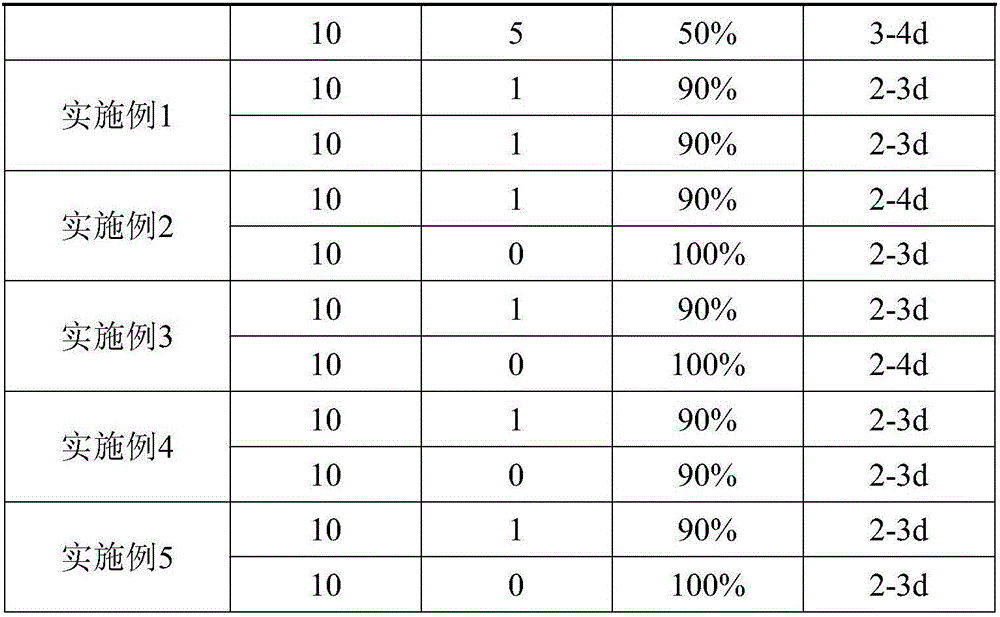Feed additive for treating bacterial enteritis disease of phractocephalus hemioliopterus, as well as preparation method thereof
A technology for bacterial enteritis and feed additives, applied in the field of aquaculture, can solve problems such as environmental pollution and limited treatment effect, and achieve the effects of improving nutrition level, improving immunity, and supplementing nutrition and physical strength.
- Summary
- Abstract
- Description
- Claims
- Application Information
AI Technical Summary
Problems solved by technology
Method used
Image
Examples
Embodiment 1
[0027] A feed additive for treating bacterial enteritis of red-tailed catfish, prepared from the following components in parts by mass: 40 parts of Pueraria japonica, 24 parts of Huangpao, 25 parts of Houttuynia cordata, 35 parts of reed root, chicken 12 parts of gold, 4 parts of tangerine peel, 12 parts of dandelion, 20 parts of cactus, 19 parts of big green leaves, 20 parts of onion, 12 parts of mint, 14 parts of purslane, 16 parts of peony bark, 3 parts of Puer tea, and 18 parts of cnidium 14 parts of pine nuts, 15 parts of comfrey, 20 parts of pulsatilla, 17 parts of Polygonum rubrum, 20 parts of Cortex Phellodendri, 12 parts of Eucommia, 21 parts of barley, 4 parts of hawthorn, 4 parts of honey, 25 parts of water earthworms, 20 parts of artemia, 25 parts of fish meal, 5 parts of fish oil.
[0028] The preparation method of the above-mentioned feed additive for the treatment of red-tail catfish bacterial enteritis disease comprises the following steps:
[0029] (1) Weigh ...
Embodiment 2
[0037] A feed additive for treating bacterial enteritis of red-tailed catfish, prepared from the following components in parts by mass: 42 parts of Pueraria japonica, 25 parts of Huangpao, 26 parts of Houttuynia cordata, 33 parts of reed root, chicken 11 parts of gold, 3 parts of tangerine peel, 15 parts of dandelion, 17 parts of cactus, 15 parts of big green leaf, 18 parts of onion, 15 parts of mint, 15 parts of purslane, 13 parts of peony bark, 2 parts of Puer tea, 20 parts of cnidium 11 parts of pine nuts, 18 parts of comfrey, 19 parts of pulsatilla, 20 parts of Polygonum rubrum, 18 parts of Cortex Phellodendri, 14 parts of Eucommia, 15 parts of barley, 5 parts of hawthorn, 3 parts of honey, 22 parts of water earthworm, 24 parts of artemia, 27 parts of fish meal, 4 parts of fish oil.
[0038] The preparation method of the feed additive for treating red-tailed catfish bacterial enteritis in this embodiment is the same as that in Embodiment 1.
Embodiment 3
[0040] A feed additive for treating red-tailed catfish bacterial enteritis, prepared from the following components in parts by mass: 45 parts of kudzu flower, 21 parts of Huangpao, 27 parts of Houttuynia cordata, 32 parts of reed root, chicken 12 parts of gold, 5 parts of tangerine peel, 14 parts of dandelion, 25 parts of cactus, 17 parts of big green leaves, 18 parts of onion, 14 parts of mint, 18 parts of purslane, 18 parts of peony bark, 3 parts of Puer tea, and 17 parts of cnidium 15 parts of pine nuts, 21 parts of comfrey, 16 parts of pulsatilla, 21 parts of Polygonum rubrum, 24 parts of Cortex Phellodendri, 9 parts of Eucommia, 16 parts of barley, 4 parts of hawthorn, 4 parts of honey, 21 parts of water earthworm, 25 parts of artemia, 27 parts of fish meal, 4 parts of fish oil.
[0041] The preparation method of the feed additive for treating red-tailed catfish bacterial enteritis in this embodiment is the same as that in Embodiment 1.
PUM
 Login to View More
Login to View More Abstract
Description
Claims
Application Information
 Login to View More
Login to View More - R&D
- Intellectual Property
- Life Sciences
- Materials
- Tech Scout
- Unparalleled Data Quality
- Higher Quality Content
- 60% Fewer Hallucinations
Browse by: Latest US Patents, China's latest patents, Technical Efficacy Thesaurus, Application Domain, Technology Topic, Popular Technical Reports.
© 2025 PatSnap. All rights reserved.Legal|Privacy policy|Modern Slavery Act Transparency Statement|Sitemap|About US| Contact US: help@patsnap.com


